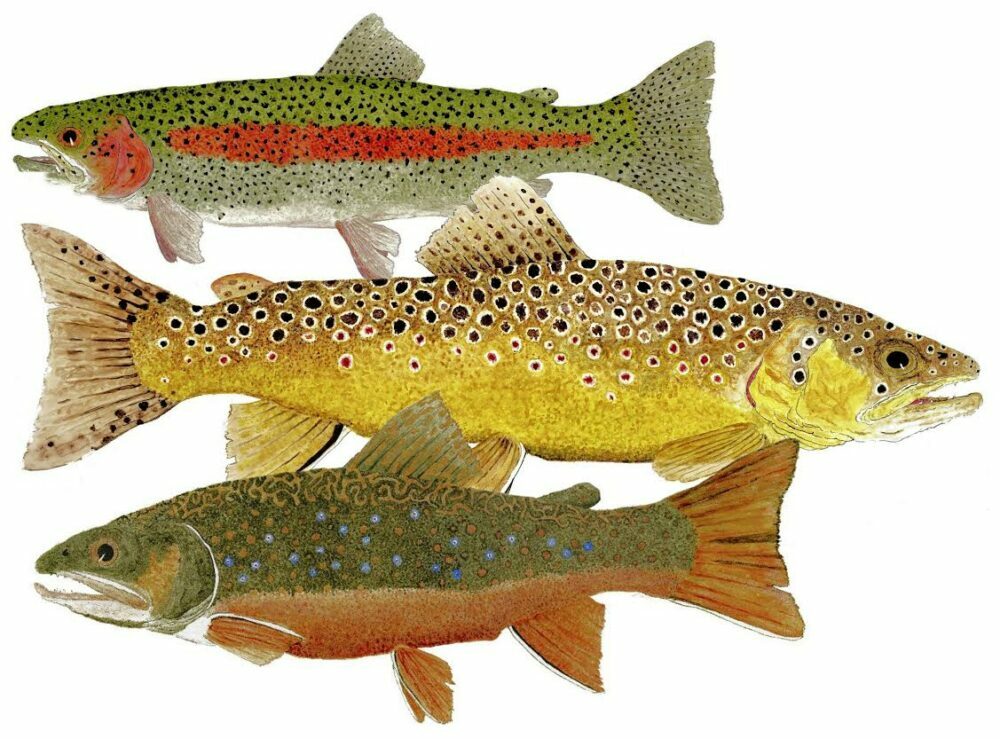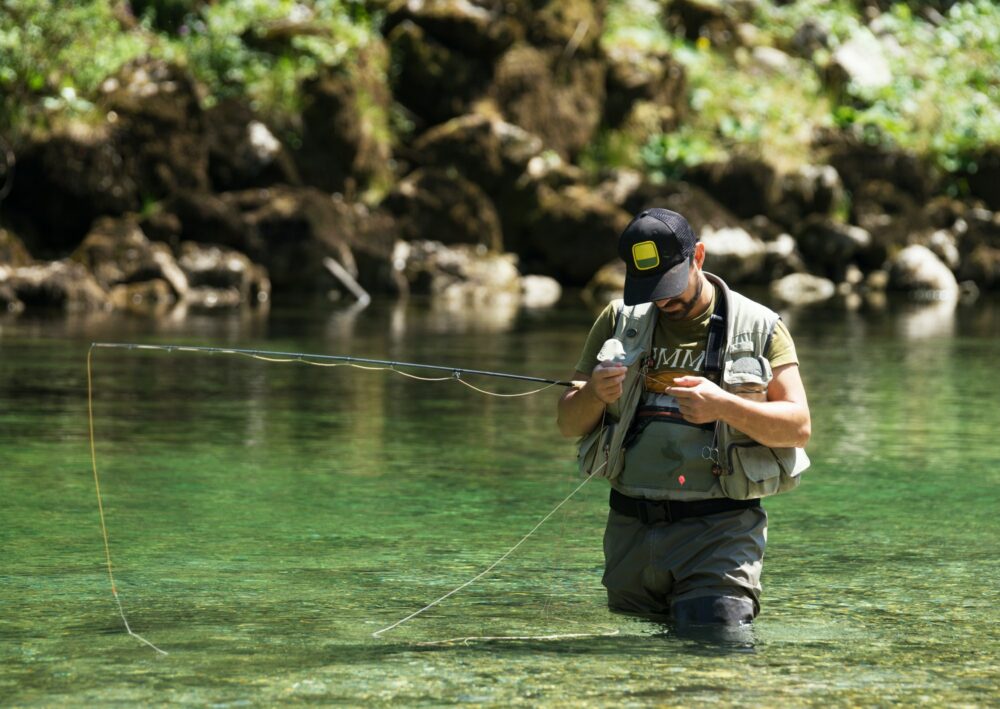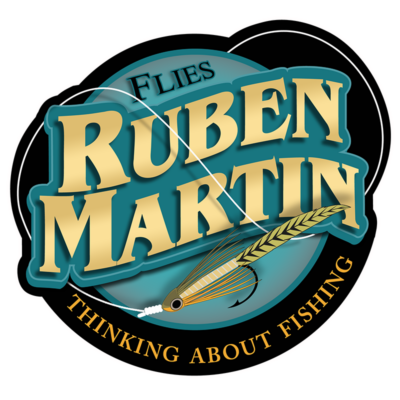
The illustration by Thom Glace is rainbow trout, brown trout, and brook trout. Used with permission.
Refusing to conform. A good reason

Henry Clement
By Henry Clement
Anglers should be able to decide the best hook and fly to use while observing the water they are standing in or from the deck of a skiff they are about to cast from, or the combination of fly and hook the guide or captain says to tie on.
Can you change the hook on a fly while fishing?
Yes, the hook replacement choice is unlimited with a proper tube setup.
An angler fishing a tube fly can choose any hook separately from the fly, no matter its measurements or specifications. The new hook can also be selected as a replacement many times after its first deployment.
Choosing options is impossible after the hook-tied fly leaves the tying bench. It is useless if the hook is damaged during transport or engagement.
Tippets and going up-street
Make a Perfection Loop (see video) in the tippet material you plan to use: Fluorocarbon or monofilament, pound test to a limit of 20 (International Game Fish Association/IGFA).
NOTE: Using IGFA rules, a tippet has no maximum length limitation. However, the class tippet must be at least 38.10 centimeters (15-inches) long (measured inside connecting knots). An added shock tippet, not to exceed 12-inches (30.48 cm) in length, may be added to the class tippet.
NOTE 2: Keep the Perfection Knot’s loop short enough to avoid the hook from self-snagging.
Planning for Success
Pre-tied tippets with hooks on Perfection Loop Knots are convenient for those prone to proficiency and familiar with the fishery. Keep tippets at a length meeting IGFA regulations if a world record type angler.
There is always old-school

Vintage fly fishing rod creel and net with a lantern on an old wood background. Envato images.
On riverine or saltwater flats, you pull out the tippet material length and diameter you want, tie a Perfection loop, close by pulling the hook through (see video), seat, and tie an Improved Clinch Knot to the tippet ring. You are cleared to cast.
Ditch the junction tubing
Sliding the Perfection Loop ‘Knot’ into the tube anchors the hook in any orientation well enough to avoid using the bulky junction tubing. The latter makes the hook assembly unnecessarily longer, likely exposes it, gains tail weight, and adds wind resistance to casting.
Keeping the advantage
Making the tippet’ knot’ the anchor. That will improve casting and get the fly to release up the leader, whereas the added junction tubing will tend to lock the fly in place – subject to abuse.
NOTE 3: The tubing diameter plays a big part in achieving a better knot anchoring outcome.
NOTE 4: Sometimes, when retrieving the fly free from its housing in the tubing, it could have been short-striked or temporarily snagged. Check the hook point; if it is damaged, replace it—you may also need a new tippet. If the free-swinging hook is undamaged, re-seat it in the tube.

The knots have it.
How to fly fish all day and stay focused
Adopting the cast and continually stepping forward to cast anew, albeit modified, has produced good results from plagiarizing it from the Brits decades ago in Iceland, angling for brown trout and Atlantic salmon. Still, maybe more importantly, the British method of casting and stepping forward does keep one focused.
Conclusion
Fish tubes for better results. While riverine and shore-bound adopt the cast, retrieve, step forward, and repeat technique. That technique, for some reason, is satisfying in that you feel like you covered maximum fishable water. It seems difficult to yeild to boredom when moving forward all the time with the positive thought of catching something.
NOTE 5: The British method of casting, retrieving, stepping forward, and repeating is not workable in angler crowded waters.







